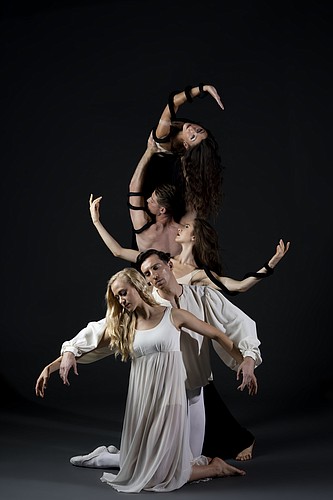- April 15, 2025
-
-
Loading

Loading

Barry Wordsworth never meant for ballet to become his life’s endeavor.
He’s just never found any other outlet so perfectly married to his creative focus.
Wordsworth, the principal guest conductor for London’s Royal Ballet, rubbed shoulders with luminaries like Frederick Ashton and Kenneth Macmillan as a young man, and today he’s one of the top practitioners keeping their art alive.
Wordsworth will be in town to guest conduct the Sarasota Orchestra as part of Sarasota Ballet’s “Expressions” program. But 50 years ago, though, it may have been hard for Wordsworth to see this coming.
Here he was, a recent college graduate with skill at playing the harpsichord, and that would up being an entree into a completely different kind of performance.
MacMillan tabbed him to play in his ballet, “Las Hermanas,” and Wordsworth never looked back.
“I wasn’t really a theatre person,” says Wordsworth of his ballet baptism. “I was a baroque musician, an organist, a choirmaster. And I suddenly got asked to do this and entered into this world with so many different disciplines.
"Of course the dance discipline, but also the lighting and the costumes and the scenery. And I was like speechless to see all this come together. I think that if you enjoy all those different things and being part of a team, then conducting for opera and conducting for ballet is something which is really a very, very special thing to do.”
Wordsworth says he did not know Ashton that well; he met him and worked with him in some rehearsals, but Ashton had semi-retired by the time Wordsworth came into the field.
But MacMillan was a different kind of relationship indeed.
MacMillan served as the Royal Ballet’s principal choreographer from 1977 into the 90’s, and Wordsworth came over from the Sadler’s Wells Royal Ballet in 1990 to serve as the Royal Ballet’s Music Director.
“I knew him and loved working with him,” he says of MacMillan. “Extraordinary, extraordinary man.”
For Wordsworth, who has also worked extensively with symphonies, there’s just no replacing the energy rush of conducting ballet.
The intricacies of the craft dictate that he arrives early, and so he spent two weeks working with the dancers in preparation for “Expressions.”
That’s necessary, he says, because the ballet is a living organism.
He needs to see the way the dancers process the music on a granular level so he can react from night to night.
“When the curtain goes up, more than anything else, it's down to the conductor,” he says. “You have to be there to balance all the musical demands as you understand them, but also to take on board all the demands of the choreography and all the demands of the various dancers who are dancing the solo roles.
"Every night will be different. Even with the same dancer; sometimes they come in full of energy. Another night, they've got perhaps less energy and they're more thoughtful. And then you are trying to meld the whole thing together and make a performance which will send the audience home feeling that they've seen something wonderful.”
Wordsworth has worked with the Sarasota Ballet before, and that’s due to another pair of longstanding ballet relationships. He knows Iain Webb and Margaret Barbieri from their time as dancers with the Sadler's Wells Royal Ballet, and he says it’s so rewarding to be able to work with them as company directors.
"It's wonderful to work with somebody who you basically know terribly well," he says. "Companies have character and that's to do with all the dancers who are involved but also very much to do with the management and the people who direct the company. That's hugely important because if you're working with people who respect the music and understand where you're coming from, it starts to make the whole business a pleasure, instead of a battle. That’s how it should be.”
As for the pieces on the program, Wordsworth says there’s both stunning musicality and movement involved.
He says that he’s conducted for “Rhapsody,” Ashton’s one-act ballet to Rachmaninoff created for the Queen Mother’s birthday in 1980, in many places around the world.
But for another act, Ashton’s “Dante Sonata,” Wordsworth has only conducted for it in England. The “Dante Sonata,” which is danced to music by Franz Liszt, is a rarer performance despite the fact that it was created all the way back in 1940.
The third piece, MacMillan’s “Danses Concertantes,” will be a Sarasota company premiere, as will the Dante Sonata.
That’s part of what makes it all fun for Wordsworth; he isn’t just bringing British ballet across the world, he’s seeing how it works with dancers from different cultures and backgrounds.
“These three ballets, Royal Ballet pieces that were created here, yes, there's a certain link and a feeling about them and what they stand for,” he says. “But when you go to a different group of dancers, they can bring in something new, which is as important and as interesting as what you bring to them. So what you hope is that it's a beautiful mix of input.
"And that's one of the reasons I love touring and going as a guest conductor; Not because I know all the answers, because I want to learn what they what they think about the piece as well.”